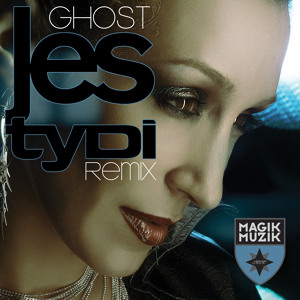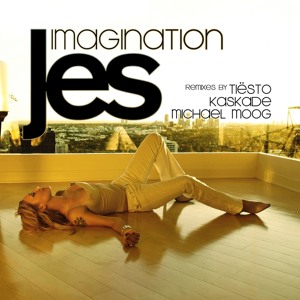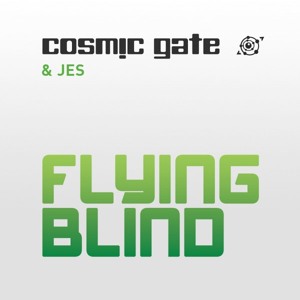VIP Client Story: Jes Interview

This chart topping, award winning New Yorker has packed four albums, two Billboard #1 singles, intercontinental touring and countless superstar DJ collaborations into five short years as a solo artist. Since her legendary release “As The Rush Comes” with Motorcycle redefined the landscape of EDM, JES has propelled an unending stream of solo hit songs and collaborations with a who’s who of the worlds most prominent DJ’s including TIesto, Armin Van Buuren, Paul Oakenfold, Kaskade, BT, Richard Durand and Cosmic Gate. JES has collected awards from the prestigious International Dance Music Awards at Miami’s WMC, The ISC (International Songwriting Competition ‘08’ 09 and ‘10) and topped Billboard’s “Most Played Dance Songs of the Decade” chart (2000-2010). Her tours have touched the shores of 6 continents and graced international events such as the Beijing Summer Olympics.
Her latest release “As We Collide” (Armada Music) with Christian Burns and the legendary Paul Oakenfold is currently receiving widespread radio play across the United States and internationally. Having reached the number one spot on Sirius XM’s popular EDM channel “Electric Area”, the Orjan Nilsen remix went on to hit number 2 on the Beatport trance chart while the track continues to gain popularity amongst fans.
TYDi’s reworking of JES billboard hit “Ghost” (Black Hole Recordings) has continued to gain momentum, reaching the top 10 on the Beatport trance chart. It has been a firm fan favorite in both JES and tyDi’s sets and is gaining radio support across a multitude of EDM networks. “Flying Blind”, JES’ massive collaboration with Cosmic Gate from the album “Wake Your Mind” has received a nominated for a 2013 IDMA award in the best trance track category. Since being signed by Tiesto to his (then) own label Black Hole Recordings in 2007 JES’s career has developed at a dizzying pace. Tour performances across the globe with every major club brand, dance floor credibility and mainstream radio support, solo chart success and collaborative eminence have resulted in JES becoming one of the most recognized quality brands in EDM culture.
For more information on Jes check her out on Facebook, Twitter, and SoundCloud.
General
You are one of EDM's most in-demand vocalists, and have been involved with some seriously epic trance, house, progressive, dub-step, breaks, etc. productions throughout your long career. How did you get your start in this field?

It’s a funny story. I often say that dance music picked me because although I always loved it I wasn’t aware of all the different genres and sub genres. I had started out working in more traditional pop and rock genres in New York and was writing and singing everyday doing that. I relocated to LA for a change of scenery and started working in a Hollywood recording studio as an assistant engineer. One of the engineers working there was very much into EDM and introduced me to the rave scene in California. I was really attracted to it because it was so much about the connection of melody and emotion. The music and the voice seemed so connected and that made a big impression on me. Before too long we started writing and producing together whenever the studio was empty. One of our first songs was eventually picked up by Paul Van Dyk for his “Politics of Dancing” mix compilation which opened a lot of doors to work with other producers and DJ’s and eventually led to more releases and finally getting signed by Tiesto to his own label to release my own songs.
Are you really an angel or some other non/extra/super human entity? If not, how do you achieve such an ethereal character in your voice?
That’s so sweet – thank you lol ! Actually I am an alien, but don’t tell anyone! :)
When working with other artists such as BT, Tiesto, ATB, Paul Oakenfold, Gabriel & Dresden, Ferry Corsten, et al. are you typically involved in all song-writing aspects related to vocals such as lyrics, vocal melodies, choosing supporting harmonies, etc. or do the other artists approach you with fairly refined ideas in these areas already?
It actually varies a lot in terms of how much dialogue goes back and forth between us regarding the song. At one extreme I might get an instrumental track sent to me. I will then write, record and mix the vocals myself with my team and send back the stems. Often the final mix has just had those stems applied to a slightly different mix of the instrumental and it’s done. Some artists like to get involved with aspects of the lyrics or how the vocal production is done, but it’s quite rare. They usually want my sound and songwriting so they’re placing their trust in you to handle that part of the songwriting.
When creating your own artist material and/or working on creative collaborations, is song-writing typically a separate process from EDM production process? Which typically comes first for you: vocal melody and lyrics, or EDM groove production?
I actually find it harder to work from some of the grooves in EDM recently. It’s gotten a little drone-y in the last couple of years. Often when I get a track to write to I’ll work a chord progression over the top of it with a piano or guitar to give me something more organic to work from. Usually for me the melody comes first and then that starts to suggest lyrics to me, but sometimes I’ll have a whole lyrical pass written and work it from that angle. I have reams of lyrical ideas written into my phone, laptop, sheets of paper and that often becomes the inspiration for a song title of concept. When I’m working on my own releases generally the song gets written first. I like to play acoustic guitar or Wurlitzer and jam my ideas down before we get too involved in the production.
Is music technology such as extreme use of plug-ins and FX part of your creative process, or does that happen later in the process after the more-traditional musical ideas have been worked out?
Sometimes it happens that way for me but that’s quite rare. I like to track vocals raw and dry. I find it’s the best way for me to get the performance I want. When I’m first listening to track I’m trying to find something in it that excites me. Once I’ve focused in on that I have a place to build my performance from and I like that connection to be as direct as possible. The application of technology is usually in amplifying the human emotion that we’ve captured and making it sound like it owns the composition. I think artists often make the mistake of trying to make the vocal fit into the track. I try to work from the other perspective. For me the vocal is the track, and everything else has to fit in with the vocal.
Any creative advice you can share with aspiring vocalists?
The most important thing about any artist is that they have an unmistakable identity. It can be called attitude or sound or whatever, but when you hear it you recognize it immediately. When I think of all the people that inspired me to get started in music they all had that and that’s probably the hardest and most important part of the quest when you’re starting out.
Any cool upcoming projects coming up that you care to share with our readers?
Always! … I’ve just completed a tour with ATB where we debuted some of the new songs on his upcoming album “Contact”. I have a couple of songs on the album and it’s been a lot of fun. “Letting Go” from BT’s album ”A Song Across Wires” is getting a single release very soon with Armada. He always puts together great remix packages, so look out for that. I have a beautiful song from Roger Shah’s new “Sunlounger” album called “Glitter and Gold” that will also be getting a single release very soon. I’m actually working on my next artist album at the moment in a new studio we’ve just moved into in LA so keep your ear to the ground for upcoming news on that as well.
What hardware, OS, and host application(s) are you using with our software?
I’m all Apple (10.8x) at the moment and I do most of my recording and production in Pro Tools 10. I use Ableton Live as a sketch pad and I also use it for DJ’ing at my shows with a custom Livid Instruments controller. My main vocal mic is a Telefunken AK47 that was modified by the guys at the factory. I have a few chains for that including Avalon M5 and V5 preamps, a Retro 176 limiter, Shadow Hills preamps and I’m thinking about a MOHOG MOFET76 right now so that might be the next thing we’ll add. We’re using Metric Halo interfaces throughout the the studios. We also use them for the FOH rack for my live shows. They’re incredibly reliable and sound amazing. I’m using Aether daily in the studio as a go to reverb and we also use it with Ableton for my live performances to help recreate specific vocal sounds at the shows. The intuitive interface and vast array of well designed presets means I can find the sound I’m looking for quickly and easily every time ☺.
Reverb
How important is having access to a quality reverb to your work and production style?
Personally I think reverb (and or delay) is the single most important effect in most production styles. A lot of producers struggle with it in the early part of their careers because there really is no substitute for a quality reverb. Key instruments and sounds can sometimes sound better without reverb if you don’t have something great to work with, so it’s very important to get a really great flexible reverb palette in your arsenal early on.

When tracking vocals are typically listening to something similar to the type of reverb that will be used in the final product? If so, would you say that the reverb almost becomes an integrated part of the musical idea and affects your performance as if you were playing an instrument?
I actually prefer to track with a very dry sound. I don’t like to have any distractions from what I’m doing while I’m recording but as soon as we start to work on compiling the vocals I’m already auditioning reverbs and looking for something that places the vocal in the right space. Often the reverb we choose early on becomes integral to the sound of the vocal, and also the sonic footprint of the song.
What are some of your favorite hardware reverbs, that you have used throughout your long career? Do you still use any of these?
I used to use a lot of hardware verbs before there were great sounding software options. The Lexicon 960l was a favorite, we had one at one of the studios I used to work at., it was known as the good reverb and only deserving projects got to use it lol! I love the hall on the Bricasti as well. It all started out with a MidiVerb II. Alesis have a lot to answer for!
Any general tips for younger producers on effective reverb use or secret recipes you care to share for reverb use in EDM vocals?
Production styles are moving pretty quick at the moment in EDM so there’s never been a better time to experiment. Something I find myself doing regularly are using a delay in front of the reverb. The reverb time can be shorter than you might imagine and use the feedback in the delay to create a longer sustain. If you’re looking for a massive reverb sound but you need to avoid it washing out too much try a side chaining compressor or some other type of volume modulation in ¼ notes to create a pumping effect after the reverb in the chain. It will give you the space without the wash. If you’re looking for depth of character, try layering tails. Use a hall and a plate in equal amounts but take out the early reflections in one of them so it’s only the tails being layered.
Do you ever destructively print reverb to tracks, and then apply further sound-design transformations to the wet source sound?
I often print reverb tracks to enable reversing and other effects to be layered onto the verb later on. With the complexity of routing and available in most DAW’s these days I don’t often need to print destructively onto the source track, there’s nearly always a workaround. :)
2CAudio
What do you find most unique or inspiring about Aether & Breeze as compared to other competitive products?
Aether is a great sounding software reverb. That’s a fairly tight circle at the moment because there aren’t many software reverbs out there that you can use the word inspiring about. The presets are great starting points and the user interface is fast to use and extremely powerful. Once my reverb is in the ballpark I’m able to detail the sound very quickly without scrolling through the endless pages of a traditional interface.
Do you tend to use Aether / Breeze for extreme FX oriented presets, or more subtle and traditional reverb needs, or both?
I use it for both. One of the hardest things to find in software reverbs has always been a good stereo room. It’s one of the first things I look for in a reverb because it’s so hard to find and so useful when you have one! I love the traditional sounds in Aether, the hall is particularly fine on vocals. I also like the thematic an mystical presets when looking for something less traditional and the granular and filtered FX get a lot of use at my studio too.
How many instances per project do you typically use?
It varies a lot depending on the song. Sometimes I might just be using a short room or plate and a hall for general spacing in the instrument mix. On the vocals I might be using as few as one or upwards of six.
What kind of source sounds do you usually use with Aether & Breeze?
I use Aether on vocals, drums and percussion, synths, orchestral type sounds and also for special spatial effects. I find it’s particularly good at bringing some real world depth to sounds that are generated inside the computer by software instruments.
Do you find yourself designing your own presets on a regular basis?
The presets included with Aether are wide ranging and very well put together. I usually use them as a starting point and them tailor them to fit what I’m looking for within the context of the song I’m working on. When I’ve edited them I save them and have a wide range of my own versions, although I like to experiment so much with the interface to ever go back and use the same one twice!
Could you name some of your works in which you have actively used Aether & Breeze?
Aether and Breeze have been used in most of my releases over the last couple of years in both the creative stages and the final productions. From “HardTo Cure” and “Together” on ATB’s upcoming album release “Contact” (Dec2013) to my own releases on the Magik Muzik label. I even use it in my weekly mix show … check out those silky voice overs!

2CAudio In The Mix: Jes


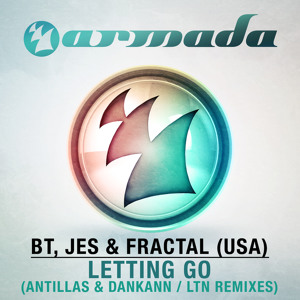
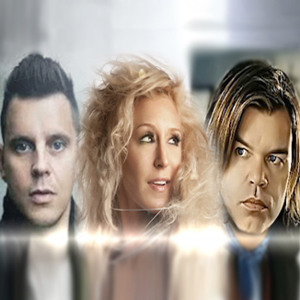
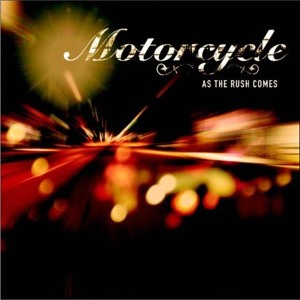
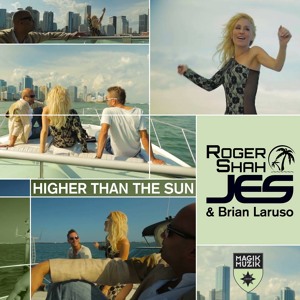
![Ferry Corsten Ft. JES "In Your Eyes" [Dirty Chips Remix Radio Edit]](https://i1.sndcdn.com/artworks-000061992501-p6deab-t300x300.jpg)
![BT ft. JES - Every Other Way [Armin Van Buuren Remix]](https://i1.sndcdn.com/artworks-000033638439-lbvizr-t300x300.jpg)
